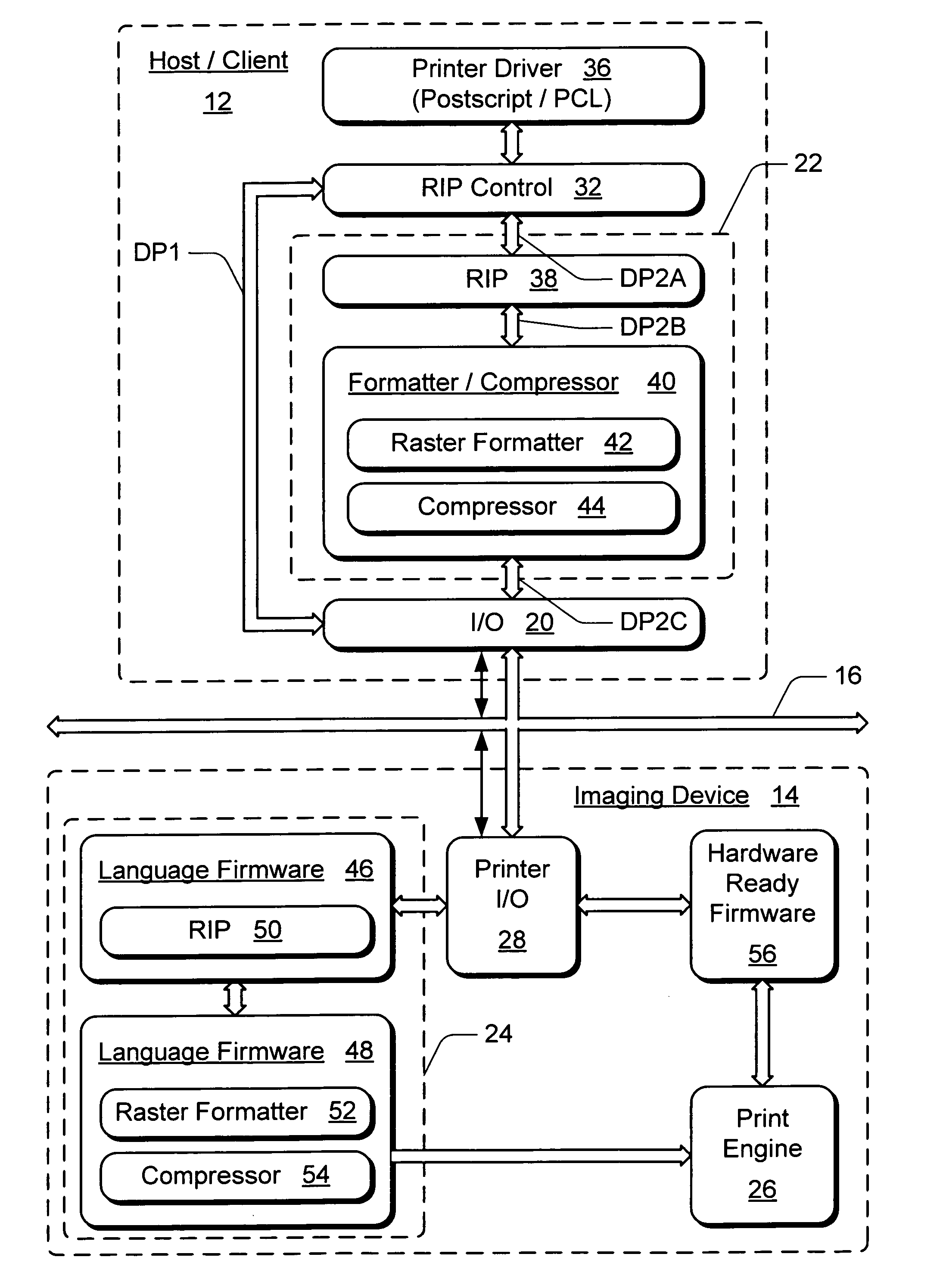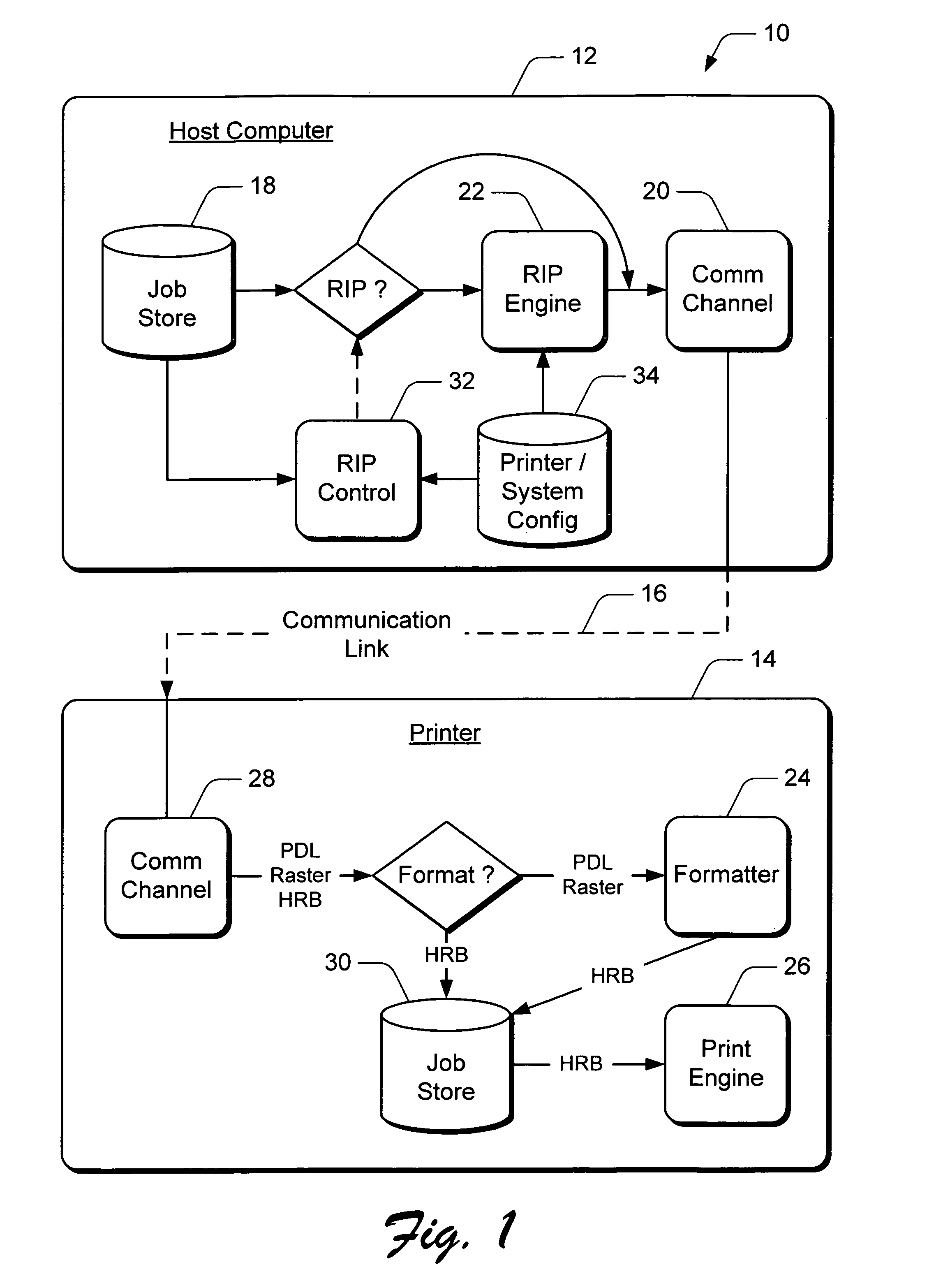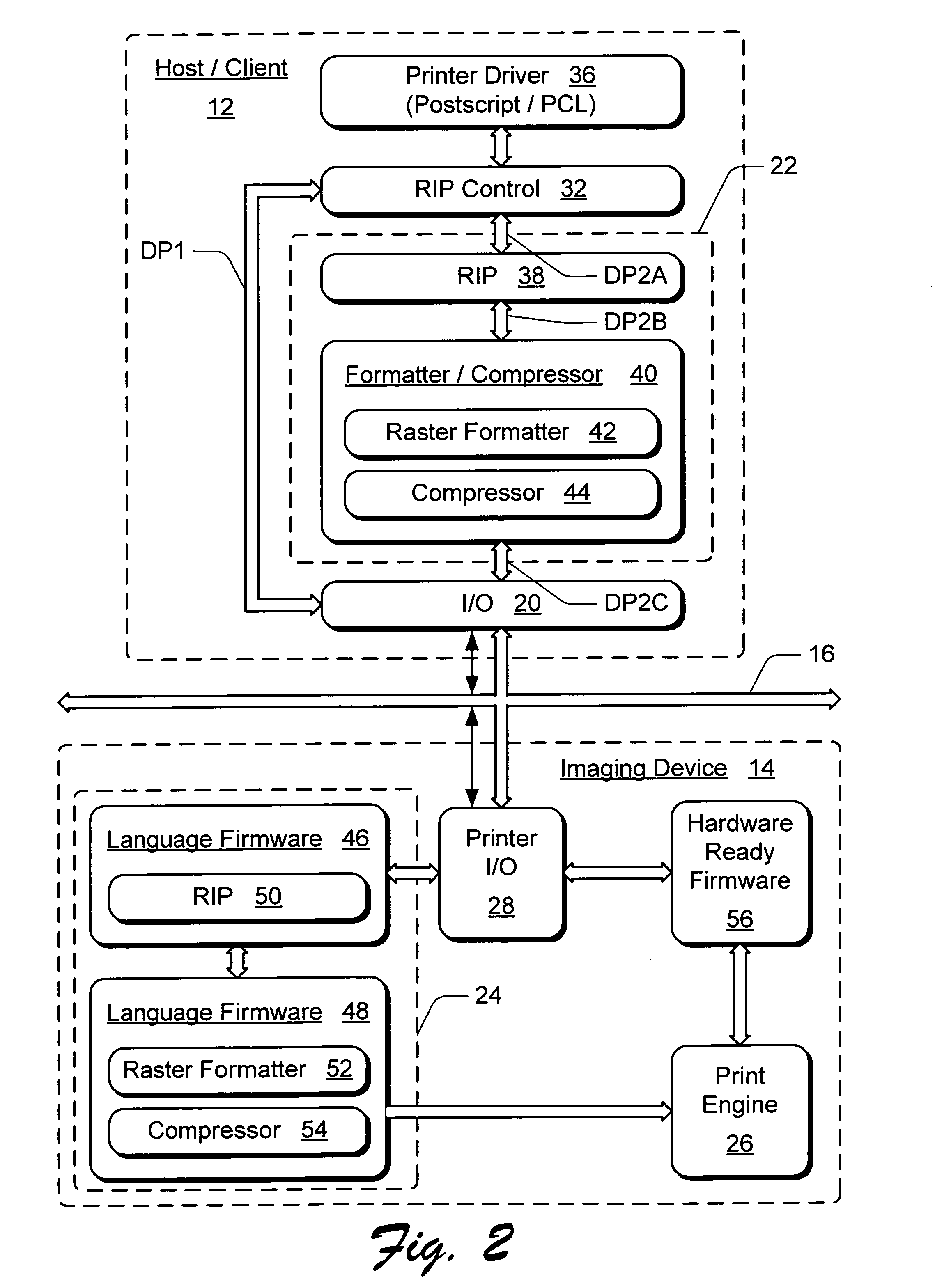Load balancing for raster image processing across a printing system
a printing system and load balancing technology, applied in the field of processing and transfer of data, can solve the problems of reducing the operating speed of the print engine, reducing the production of the printer, and the print system which offloads all the rip responsibility to the host computer, and other performance issues
- Summary
- Abstract
- Description
- Claims
- Application Information
AI Technical Summary
Benefits of technology
Problems solved by technology
Method used
Image
Examples
Embodiment Construction
[0016]As shown in the drawings for purposes of illustration, the present invention is preferably embodied in a method and apparatus which dynamically determines on a job-by-job, or, alternatively, a page-by-page, basis if the raster image processing (RIP) for a print job data file is more efficiently performed by the host computer or by the printer in a printing system to provide printed output at the maximum rated print engine capacity. The method according to the present invention monitors the entire printing process and, based on a model for estimating the time required for various component print processes, determines where the RIPping of the next print job data file should be performed to balance the processing load across the printing system to best utilize the maximum printing speed of the printer print engine. In a preferred embodiment, the method of the present invention directs the print job data processing (RIP) at either a host computer or an imaging device to ensure tha...
PUM
 Login to View More
Login to View More Abstract
Description
Claims
Application Information
 Login to View More
Login to View More - R&D
- Intellectual Property
- Life Sciences
- Materials
- Tech Scout
- Unparalleled Data Quality
- Higher Quality Content
- 60% Fewer Hallucinations
Browse by: Latest US Patents, China's latest patents, Technical Efficacy Thesaurus, Application Domain, Technology Topic, Popular Technical Reports.
© 2025 PatSnap. All rights reserved.Legal|Privacy policy|Modern Slavery Act Transparency Statement|Sitemap|About US| Contact US: help@patsnap.com



